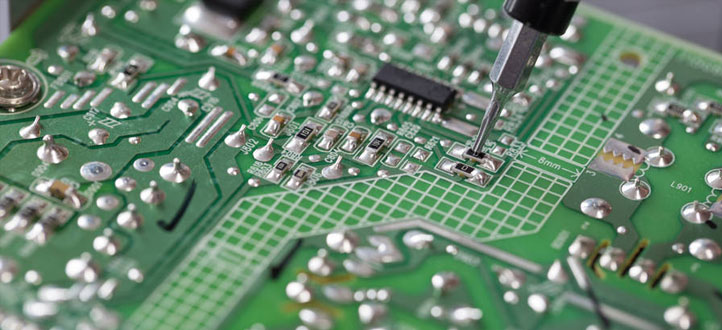The role of PCB soldering layer

Firstly, a PCB solder mask is a special material layer that is applied on top of the PCB to provide the necessary characteristics and environment for soldering processes. It serves two primary functions: protecting the PCB surface from oxidation and contamination, and providing thermal conduction and wetting properties required during soldering.
There are various types of PCB solder masks, with common ones including solder masks and solder resist. Solder masks are thin films that cover the solder pads on the PCB, available in colors such as green, red, or others. They are primarily used to protect the copper layers on the PCB from oxidation and contamination, while also acting as insulation between adjacent solder pads to prevent short circuits. Solder resist, on the other hand, is a layer of material covering the areas between PCB components and solder pads. It is typically black or other colors and is used to cover areas on the PCB where soldering is not required, preventing short circuits and soldering errors. In addition to solder masks and solder resist, there are other soldering materials such as conductive carbon ink and thermal interface materials, which play important roles in specific soldering applications.
PCB solder masks have a wide range of applications. Firstly, during the PCB manufacturing process, solder masks provide protection and insulation, preventing issues such as oxidation, corrosion, and short circuits. This contributes to enhancing the reliability and stability of the PCB. Secondly, solder masks improve soldering efficiency and quality. They assist soldering workers in accurately placing solder and provide good wetting properties, ensuring a stronger bond between solder pads and components. Additionally, solder masks can provide thermal conduction properties, assisting heat sinks and heat-dissipating components in better thermal dissipation to maintain normal operating temperatures of electronic devices.
In PCB design, it is crucial to choose and use solder masks correctly. Firstly, it is necessary to select appropriate solder mask materials and colors based on specific application requirements. Different solder masks have different requirements for soldering processes and environments. Secondly, the design and layout of solder masks should consider the positions and spacing between components and solder pads on the PCB to avoid short circuits and soldering errors. Moreover, the uniformity and thickness control of solder mask application are also significant factors influencing soldering quality.
In conclusion, PCB solder masks are indispensable in PCB manufacturing. They provide functions such as protection, insulation, wetting, and thermal conduction, contributing to improving soldering quality and efficiency. Proper selection and utilization of solder masks are crucial for ensuring the reliability and stability of PCBs. With the continuous development of electronic technology, the application of PCB solder masks will become increasingly widespread, playing a more important role in the performance and reliability of electronic devices.

